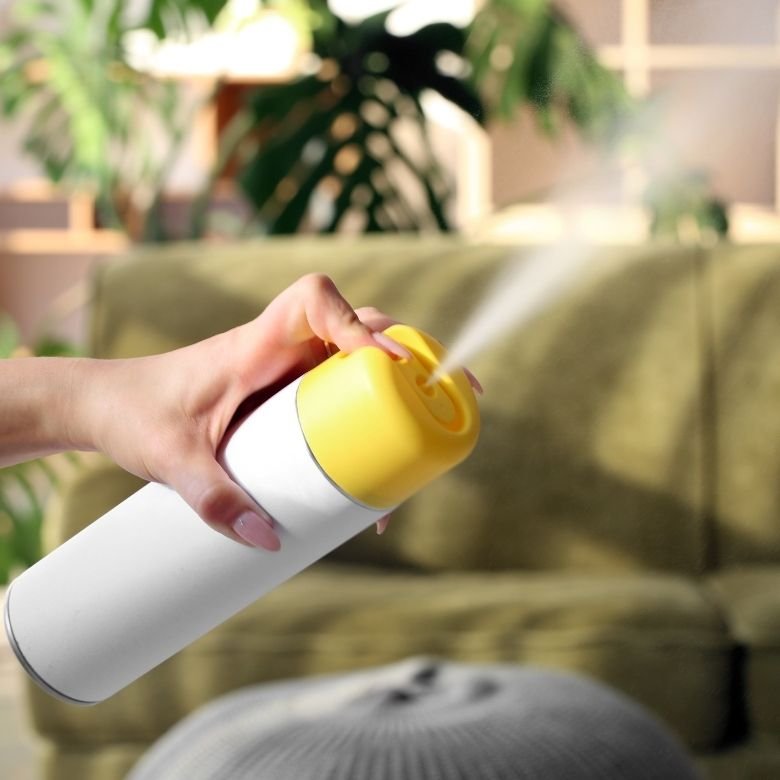We all know the smell after a rainstorm, the smell of budding spring, freshly cut grass or our family home. We often attribute various situations in our lives to specific aromas. What is responsible for this? Why are we able to recall long-forgotten events from the past even after many years only by coming into contact with a particular scent?

The sense of smell, which is classified as a chemical sense, is responsible for receiving these particular stimuli. It allows us to identify a variety of smells. They affect our emotions and mood, and evoke memories while building the extremely long-lasting olfactory memory. Although it records good memories, its other function is also to warn us against negative situations. For this reason, when we smell unpleasant food, we know that it may be spoiled and unfit for consumption. The smell of smoke or burning has the same effect – increasing alertness and causing our adrenaline levels to rise.
How does the sense of smell work?
Fragrances, whether of natural or synthetic origin, are chemicals. Smell begins with the chemical recognition of a fragrance by the olfactory receptor, which is why it is referred to as a chemical sense. Nevertheless, it is important to remember that smells are detected by the nose and perceived by the brain.
When the olfactory nerves detect an odour, they produce a stimulus that is transmitted to the olfactory bulb in the brain, which processes the stimulus and passes it on to the limbic system. The limbic system, in turn, is responsible, among others, for emotions and the process of remembering, which explains human reactions to a given smell.
However, we still haven’t answered the question of why a chemical can be associated with one olfactory sensation and not another. For example, esters have a pleasant odour, while compounds that contain sulphur do not. Sometimes molecules that have a similar chemical structure are dramatically different in how they smell. On the other hand, those of different composition may smell almost identical. This is because odour is determined by both the structure of the molecule and the presence of specific proteins at the olfactory receptors. The two can be compared to a lock and key – a molecule of a substance smells when it fits perfectly into a recess on the receptor surface.

Air fresheners – useful against unpleasant odours
We all like rooms that have a pleasant smell. It affects our well-being. For this reason, when we enter a store, we reach for the products that will make this possible. Pleasant smells are also associated with cleanliness. Shops offer air fresheners in a wide range of scents and in various forms: from sprays, through electric air fresheners, to scented candles and reed diffusers. They are used extensively and, in particular, in public places such as shopping malls, school facilities, guest houses and the like. Using a particular fragrance is often a planned marketing strategy. For example, the smell of gingerbread, tangerines and cloves is distributed in shopping malls during the holiday season to encourage customers to buy more gifts.
What do such air fresheners contain? They may incorporate added chemicals that include alcohols, mineral oils, and chemical compounds with antibacterial properties. ROKAnol DB11W is an example of ethoxylated fatty alcohols used in such products. It’s a non-ionic surfactant that is primarily used as a solubiliser, for example, in air fresheners. Additionally, it has detergent, emulsifying and dispersing properties. In an era of increasing attention to eco-friendly measures, raw materials that will not linger in the environment are being sought. ROKAnol DB11W is precisely such a product. It’s easily biodegradable and complies with the criteria set in the Detergents Regulation.

Neutralisers – what makes them different?
Neutralisers are just as useful as air fresheners. However, their purpose is not only to mask the odour but also to remove it. This is because the chemicals in the neutralisers react with the volatile substances in the foul odour, transforming them into other substances. Neutralisers are most commonly available as a spray or aerosol.
The scent you need for happiness
In conclusion, fragrances are an important part of our everyday life. We attribute a variety of memories to them, they influence our emotions and behaviours, and even eliminate unpleasant aromas that reach our olfactory receptors. Natural essential oils are increasingly used as substitutes for other harmful substances.
